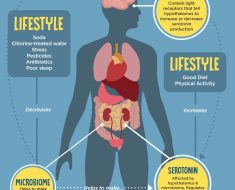In short measure, brain training is simply “a set of activities that are designed to stimulate thinking skills and problem solving”. Today, brain training has been mainly targeted on older adults.
Mostly, these exercises are being used to improve the thinking and reasoning skills of this older group in our society. (Years earlier, it was found out that older adults who neglected or were unable to use their mental powers lost most of their mental abilities after some time.)
In the course of these exercises, researchers uncovered another happy discovery. The participants were able to transfer the results of their brain training in their other everyday functions and activities.
In contrast with their untrained counterparts, those who received brain training (memory, speed of processing and reasoning) were reported to have fewer difficulties in doing everyday tasks such as cooking, managing their finances, and following their medication instructions to name a few.
Learning-disabled
On the other hand, medical authorities are now looking into the big possibility that another set of senior citizens today have learning disabilities. The causes are totally different, however.
These are the healthy older adults who do not seem to be victimized by any mental deterioration through disuse or other forms of neglect, disease or other causes. They are the older adults who belong mostly to the baby boomer generation.
Public schools
They are today’s senior citizens who attended school before special education programs were around. In those days, these learning-disabled children were mostly regarded as lacking in abilities, simply lazy, or euphemistically referred to as “slow learners.”
In those times, public schools were considered the best and most efficient in educating children. They are typically straightforward with little no flexibility in organization, in educational practices and in their rules.
Instructions were lecture types and lessons were mostly from textbooks. Many students who struggled were underachievers and could have fared better with more appropriate educational services.
Coping
Many of these ‘poor” students did not continue their high school. Instead, they opted to work and marry and live their lives as best as they could. Despite this, they were among the most productive of generations.
Many took jobs where their disabilities did not affect performance, and they used their excellent survival skills handed down by their resourceful parents.
Present struggles
Today, many of these adults have problems processing information quickly. They would have problems at check-out counters and in other areas where speed is needed to get by.
Usually, they would have problems balancing their checkbooks or paying bills. Many would be having problems understanding and managing their own health care needs. Most of them have low retirement income because they took low-paying jobs in their working years.
Brain training
Current research has proven (through MRI) that brain training had been effective in improving memory even in persons with brain impairments or learning disabilities. The theory is that these daily mental activities may have improved blood circulation to the brain and improved its functions.
Today, researchers emphasize that consistency is the most important key in getting the full benefits of any brain training program, just like any physical exercise. They have also been proven to help improve the mental functions of learning-disabled adults.






